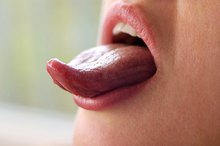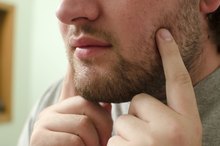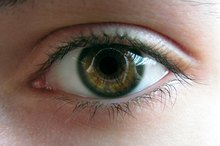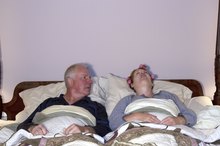Facial Exercises for Stroke Patients
Strokes can cause facial paralysis or partial loss of muscle control. These symptoms make speech, eating, facial expressions and general facial movement difficult or impossible for stroke victims. Specific exercises can help stroke patients regain partial or full mobility in their facial muscles. Post-stroke therapy involves retraining your brain to use different neural pathways to regain facial control through repetitive practice, according to the National Institute of Neurological Disorders and Stroke.
Smiling
Immediately after a stroke, all facial exercises will be difficult. Start slowly, focusing on the brain–muscle connection. Practicing and using the muscles are keys to regaining mobility. Smile, or try to smile, without showing your teeth. Next, smile showing your teeth. Slowly smile, parting your lips deliberately into a smile. Pucker your lips like you are going to blow a kiss. Use equal muscle strength on both sides of your face. Repeat this sequence until full mobility returns.
- Immediately after a stroke, all facial exercises will be difficult.
- Smile, or try to smile, without showing your teeth.
Vowel Sounds
Exercises to Improve Facial Muscle Tone for Speech Therapy
Learn More
More than one-fourth of all stroke patients have language impairments, according to the National Institute of Neurological Disorders. Post-stroke exercises can help you to overcome them. Start by making vowel sounds. Speak each vowel sound out loud, which works the muscles around your lips and jaw. Exaggerate each sound, speaking slowly, to get the correct sound and lip movement.
- More than one-fourth of all stroke patients have language impairments, according to the National Institute of Neurological Disorders.
- Exaggerate each sound, speaking slowly, to get the correct sound and lip movement.
Eyebrows
The Bell's Palsy Information Site recommends eyebrow exercises for people whose strokes result in Bell's palsy, a dysfunction of the facial nerve that results in loss of facial muscle control. Raise and lower your eyebrows, keeping a slow, steady rhythm. Next, raise your eyebrows, hold for 10 to 15 seconds, lower your brows and repeat. Focus on performing the exercises correctly, even if you have to take your time. Use short exercise sessions, and perform the exercises several times during the day.
- The Bell's Palsy Information Site recommends eyebrow exercises for people whose strokes result in Bell's palsy, a dysfunction of the facial nerve that results in loss of facial muscle control.
Eyes
Simple Exercises to Cure Your TMJ Permanently
Learn More
Exercising your eyes is another way for stroke patients to work facial muscles. Open and close your eyes slowly without moving your brows. Next, try to close your affected eye slowly without moving your eyebrow downward or your lips upward. Winking is an effective facial exercise after a stroke. Wink only one eye, if possible, and then alternate winking with each eye. Open your eyes as wide as possible, hold them open and then rest.
- Exercising your eyes is another way for stroke patients to work facial muscles.
Nose
To exercise your nose, wrinkle it and sniffle. Next, flare your nostrils, hold them open and then release. Repeat these motions slowly several times throughout the day.
Related Articles
References
- American Stroke Association
- de Almeida JR, Guyatt GH, Sud S, et al. Management of Bell palsy: clinical practice guideline. CMAJ. 2014;186(12):917-22. DOI: 10.1503%2Fcmaj.131801
- De Seta D, Mancini P, Minni A, et al. Bell's palsy: symptoms preceding and accompanying the facial paresis. ScientificWorldJournal. 2014;2014:801971. DOI: DOI: 10.1155/2014/801971
- Mackay MT, Yock-Corrales A, Churilov L, Monagle P, Donnan GA, Babl FE. Differentiating Childhood Stroke From Mimics in the Emergency Department. Stroke. 2016;47(10):2476-81. DOI: 10.1161/STROKEAHA.116.014179
- Okano Y, Ishimatsu K, Kato Y, et al. Clinical features of stroke mimics in the emergency department. Acute Med Surg. 2018;5(3):241-248. Published 2018 Apr 10. DOI:10.1002/ams2.338
- Zandian A, Osiro S, Hudson R, et al. The neurologist's dilemma: a comprehensive clinical review of Bell's palsy, with emphasis on current management trends. Med Sci Monit. 2014;20:83-90. DOI:10.12659/MSM.889876
Writer Bio
Caroline Thompson is a professional photojournalist who has been working for print and online publications since 1999. Her work has appeared in the "Sacramento Bee," "People Magazine," "Newsweek" and other publications. She holds a Bachelor of Arts in photojournalism from California State University at Hayward and a personal trainer certification from the university's Health and Fitness Institute.









